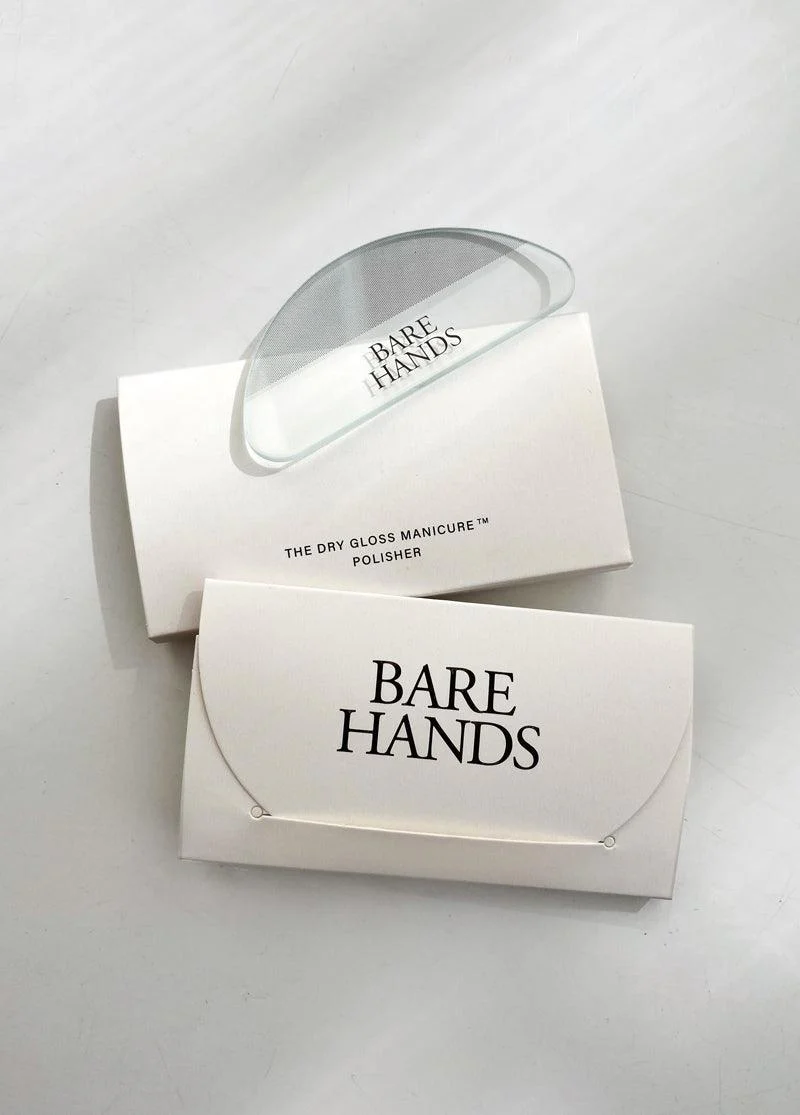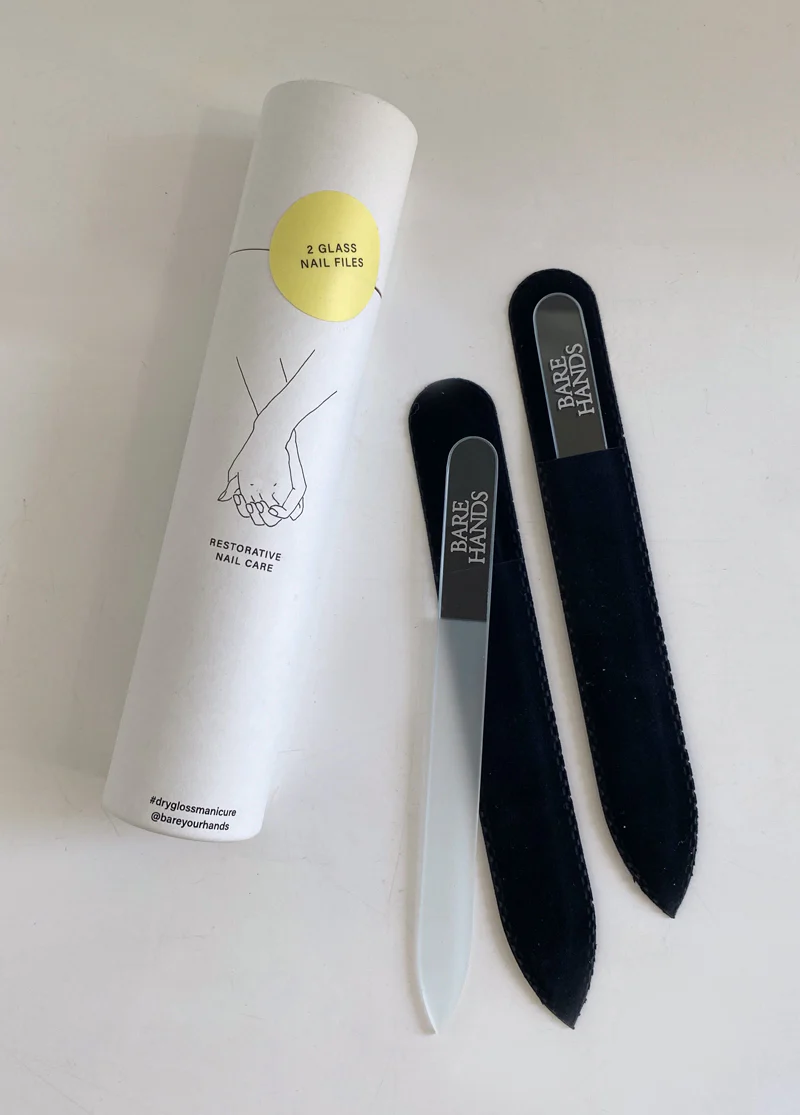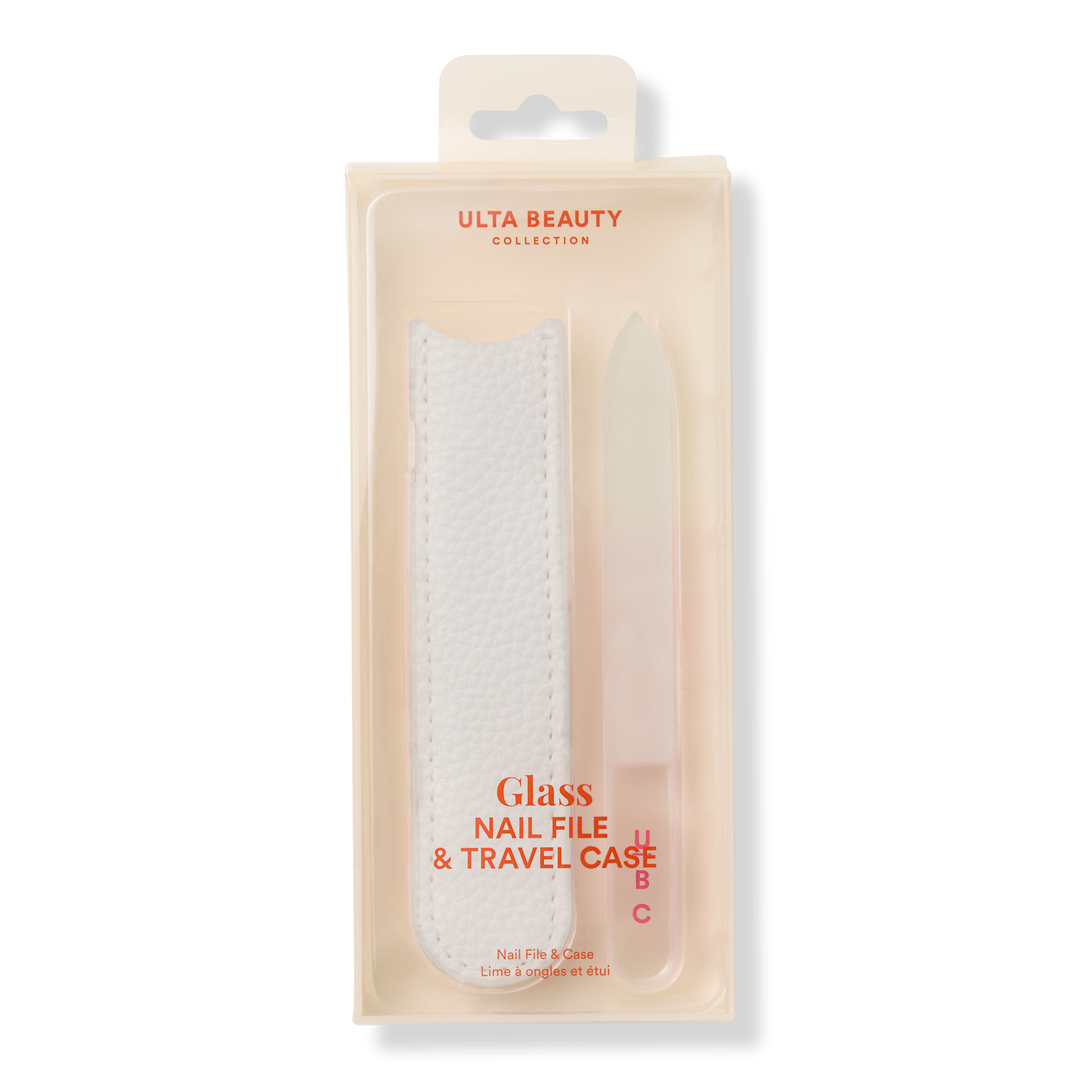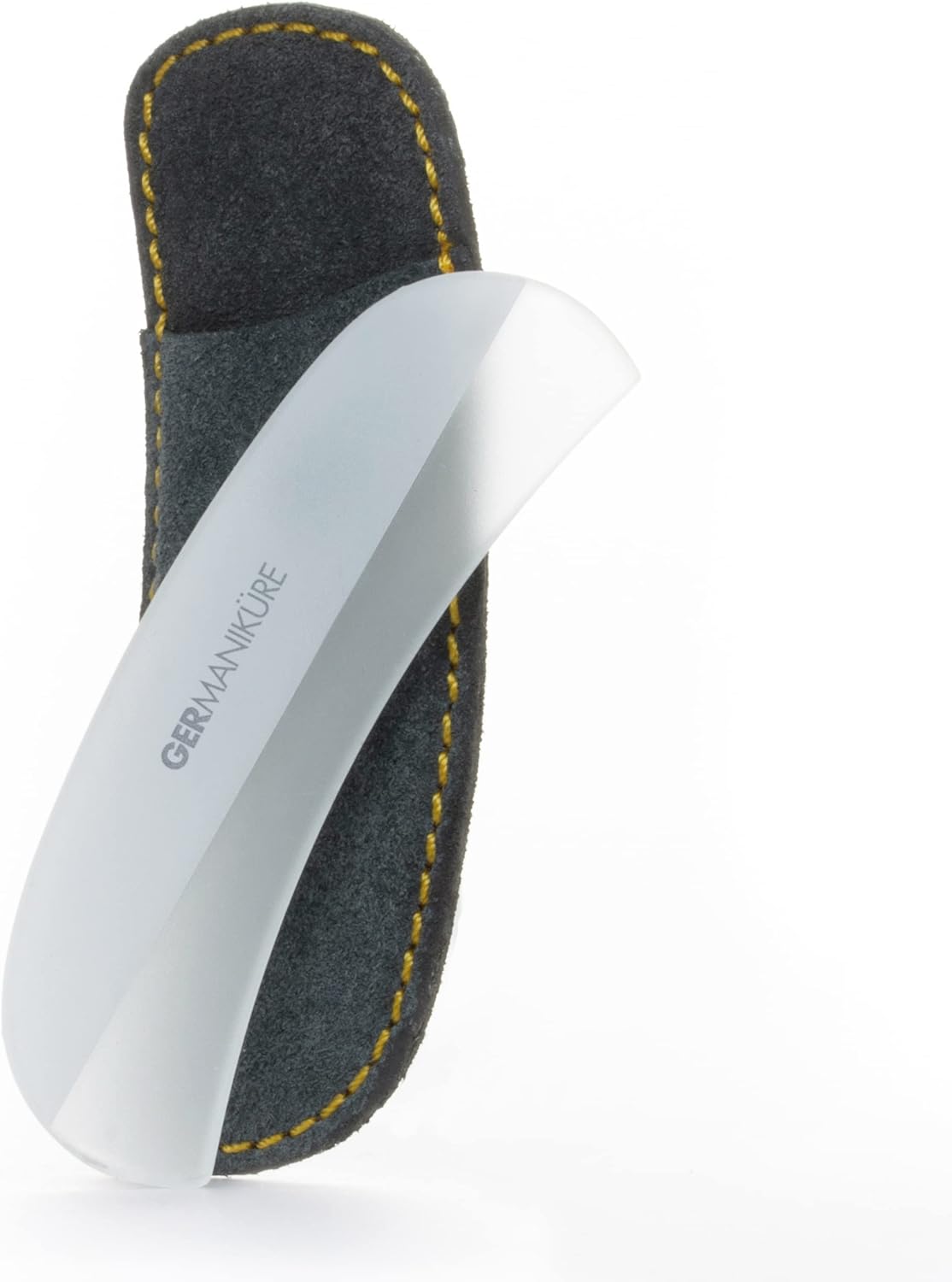All linked products are independently selected by our editors. If you purchase any of these products, we may earn a commission.
My nails have been through a lot over the past three decades. I was a compulsive nail biter throughout most of my childhood and teen years, and it wasn’t until college that I kicked the habit for good. From there, I’ve struggled with brittle, weak nails on and off depending on my anemia, stress levels, diet, and other factors. Even though I no longer instinctively chew my nails like I once did, I was still prone to picking if I noticed a scraggly edge or a hangnail. Until one day, I decided that I’d be a lot less likely to pick if I had a better alternative than taking matters into my own hands — literally.
AdvertisementADVERTISEMENT
I was first introduced to glass nail files a few years ago through Bare Hands’ Dry Gloss manicure kit, and ever since then, my natural nails have never looked better. Most manicurists have sworn by glass files for years, thanks to their ability to shape nails without snagging, but I had no idea that the right tool could actually prevent me from damaging my nails and help them grow. Recently, I was traveling and broke a nail; instead of picking at it, I ran to the closest beauty store and picked up a glass nail file to reshape and prevent further damage. The one I found? Ulta Beauty Collection’s version, which came in a travel-friendly sleeve perfect for keeping in a makeup bag or purse for on-the-go use. It also turned out to be the best impulsive buy for my natural nails. Read ahead for a deep dive into the benefits of glass files — and exactly why they’re worth the investment.
Why are glass nail files better for your natural nails?
You might not think twice about the kind of nail file you’re using, but there’s a good chance it could be causing more harm than good to your natural nails. “Traditional emery boards cause microscopic tears at the tip of the nail,” explains Dr. Dana Stern, a board-certified dermatologist and founder of nail care brand Dr. Dana. “Glass files create a perfectly smooth edge that seals keratin [which nails are made of] and prevents splitting, peeling, breakage, and even premature polish chipping,” she adds.
AdvertisementADVERTISEMENT
How should you use a glass nail file?
According to Dr. Stern, glass files are best suited for filing the free edge (aka the “top”) of the nail to shape and shorten. Unlike other types of files, glass versions can be safely used to file the nail in any direction. With other, more abrasive materials, you are usually instructed to only file nails one way to avoid creating a jagged edge.
How often do you have to replace glass nail files?
Happily, glass files are a sustainable, reusable alternative and can be cleaned between uses. “In salons, any porous item should be considered one-time-use as they can potentially harbor infectious material and cannot be sterilized,” Dr. Stern says. “Another advantage of glass tools is that they don’t dull and are therefore continuously reusable.” Keeping your glass file in a protective case will help shield it from chemicals and getting scratched (or scratching other things).
How do glass nails help natural nails grow?
It may seem counterintuitive that a tool designed to shorten your nails can actually help them grow, but think of it as a long game strategy, like how regular hair trims can help avoid split ends. “Switching to a glass file is advantageous because the nail is less likely to peel, split, and break, so over time, you are more likely to achieve length with a glass file than a traditional emery board,” explains Dr. Stern.
For me, having neat, groomed nails — with or without polish or gel — discouraged me from picking at them, which would cause them to peel or break, and set my growth journey back to square one. I’ve been using the Ulta one several times a week since it lives in my bag and therefore accompanies me almost everywhere. I’ve found myself fixing my nails waiting in line at a coffee shop, or when I touch up my lipstick in the bathroom at happy hour. Despite the $9 price tag, it’s just as good as any other brand (including more expensive ones) I’ve tried; it's lightweight but doesn't feel flimsy or cheap. Plus, the grain is on the finer side, making it quite gentle on my nails. Within a month, my nails looked visibly better and were breaking and splitting less often. In the past, I swore by builder gel to achieve any meaningful growth. It's been months since my last gel manicure, but with my wedding coming up, I’ll likely get one in the books soon — especially now that I’m set up for success with healthier natural nails.
AdvertisementADVERTISEMENT
Is there any recommended "aftercare" post-glass nail file use?
It’s not required, but then again, pampering your nails is never really a bad thing. “Nothing needs to be done [after using a glass file] for the nail per se, but I always recommend keeping the cuticle well hydrated,” says Dr. Stern, adding that a healthy cuticle is foundational for a healthy nail. Her go-to? The Dr. Dana Nourishing Cuticle Oil, which contains indigo naturalis (an herb used in traditional Chinese medicine for reducing inflammation), plus sunflower and jojoba oils to moisturize (yes — your nails need that too!) and support nail growth.
“When used regularly, cuticle oil will keep cuticles properly hydrated and allow nails to grow healthier and stronger,” Dr. Dana explains. I keep one on my nightstand as a reminder to use it at least nightly, but am trying to be better about using one a few times a day. I’m a fan of Olive & June’s Cuticle Serum pens, which absorb quicker than an oil for easier, grease-free use during the day.
Which glass nail file is best for me?
Not all glass files are created equal, and Dr. Stern specifically notes that the level of abrasiveness can vary among glass files. What’s more, not all of them are meant for natural nails. (Grittier ones may be used as a first step to remove gel polish, for example.) If you’re simply looking to replace your basic emery board, something like my new Ulta find or the Dr. Dana Glass Nail File will be a major upgrade and gentle enough for regular use.
AdvertisementADVERTISEMENT
Glass files also come in a variety of shapes, which can lend themselves to other purposes besides filing. Germanikure’s Moonfile has a slight arched shape (hence the name), which is ergonomically designed for a comfortable hold, but is also great for pushing back cuticles and gently exfoliating dead skin on the sides of the nail.
In addition to using a glass file, I also like to use a glass polisher tool — namely Bare Hands’ polisher — to gently buff the nail surface. It works by removing the superficial layer of keratin (which will look like mini clouds of whitish dust) on your nails, resulting in a naturally shiny appearance. According to the brand, the polisher lasts for around six months if you buff once a week for your nails. With less frequent use, it can last up to a year. Mind you, I’ve had mine for nearly two years and it’s still in pretty good shape.
Using a glass buffer comes with a caveat, though: Dr. Stern is quick to note that a glass file is not the same as a buffer, which is safe for the nail plate. “Using a glass file at the surface can dislodge nail cells, creating an uneven surface that is more prone to peeling and breakage,” she says. “Also, filing or even over-buffing the nail surface can result in a nail that is too thin.”
Besides using a glass file on the free edge of my nails, I buff the surface once every other week at a maximum to avoid compromising their integrity, and I think it’s helped my nails not only look better (they have a natural luster, so sometimes I skip polish entirely), but grow in healthier. (Think of it as maintaining a healthy skin barrier — less is more!)
Ready to become a card-carrying member of the glass file club? Shop our favorites below.
AdvertisementADVERTISEMENT











